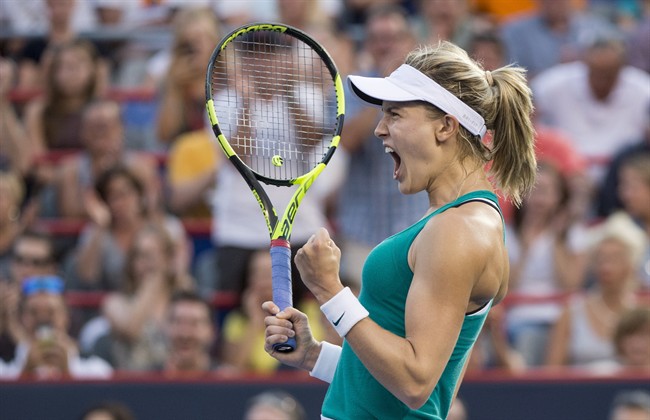Despite women being under-represented in some high-pressure work forces, a new study suggests women are less likely to choke under pressure than their male counterparts.

In an effort to answer why women around the world still face pay gaps and lack representation in high-ranking and managerial roles, researchers decided to look at the high-stakes game of professional tennis to compare how men and women perform in high-stakes situations.
READ MORE: Gender quotas: Who else has them and does Canada need them?
Researchers looked at over 8,000 Grand Slam tennis games – including matches from the Australian Open, the US Open, the French Open, and Wimbledon – factoring in the multi-million dollar prizes at stakes for athletes.
Turns out, male players consistently performed poorly under pressure. And when female players did show a drop in performance, they only choked half as much as the men.
“The purpose of this study is to shed additional light on how men and women respond to competitive pressure and use its conclusions to better understand the labor market,” Ben-Gurion University researcher Dr. Danny Cohen-Zada said in a press release.
“Our findings do not support the existing hypothesis that men earn more than women in similar jobs because they respond better than women to pressure.”
WATCH: Improving opportunities for women in the workplace
But researchers noted their findings may not translate the same way in the workforce.
In tennis, women compete against each other – but the workplace is co-ed – and researchers pointed out that women may respond to pressure differently when working with male counterparts.
Prior research has also hinted that women might perform better against each other.
READ MORE: Feds may impose gender quotas on corporations if numbers don’t improve
A 2003 Harvard study on gender performance in competitive environments found women performed significantly better when competing against other women as opposed to men. But in a co-ed environment men outperformed woman.
Athletes are also conditioned to perform under high-pressure circumstances and block out distractions when it matters most.
“Tennis players may have different preferences and characteristics that may not necessarily make them a representative subject,” Cohen-Zada admitted.
WATCH: Justin Trudeau and Donald Trump held a roundtable meeting with women business leaders from Canada and the U.S. as part of Trudeau’s visit to Washington.

Women in the workforce has become a much talked about issue, one that Prime Minister Justin Trudeau took a stance on early in his term.
After winning the 2015 election, Trudeau named 15 women and 15 men to his cabinet, marking the first ever gender-balanced cabinet in Canadian history. Trudeau also managed to maintain this ratio through subsequent cabinet shuffles.
While Trudeau’s cabinet is a parity, the same can’t be said for Canadian businesses, according to Global News reporter Amy Minsky.
READ MORE: Women in the workforce: How do Canada and the U.S. stack up?
In Canada, women accounted for 35 per cent of all managers and only 32 per cent of senior managers, according to a report released last week from Catalyst, a non-profit organization working to increase and accelerate female representation in the workplace.
Going even higher up the ladder, women hold only 42 of the more than 525 “chief level” executive positions among Canada’s 100 largest publicly-traded corporations in 2016, according to that same report.
In the U.S., almost 40 per cent of females in the labour force were managers in 2015, the Catalyst report showed. And while the percentage of senior roles held by women (23 per cent) reached a record high in 2016, so did the percentage of U.S. businesses with no women at all in senior roles (31 per cent).
– With files from Global News reporter Amy Minsky




Comments